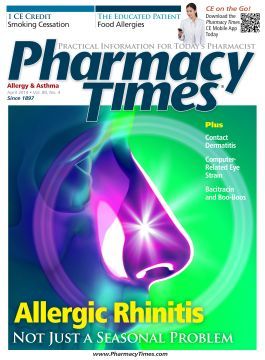Another Case of Brand Name Extension
Brand name extension is a term used to describe the reuse of a well-known proprietary name to introduce a new product that may contain an active ingredient different from the active ingredient in the original product.

Problem
Brand name extension is a term used to describe the reuse of a well-known proprietary name to introduce a new product that may contain an active ingredient different from the active ingredient in the original product. Brand name extension products have been associated with patient and practitioner confusion about the products’ ingredients, strength, and concentration. This confusion has led to medication errors in which the wrong product or dose was administered or the product was used when contraindicated.
Previous examples that have been reported to the Institute for Safe Medication Practices (ISMP) include Triaminic (historically a decongestant— antihistamine combination product) and Triaminic Fever Reducer (acetaminophen); Maalox (aluminum—magnesium hydroxide and simethicone) and Maalox Total Stomach Relief (bismuth subsalicylate); Kaopectate antidiarrheal (bismuth subsalicylate) and Kaopectate stool softener (docusate sodium); and Dulcolax stool softener (docusate sodium) and Dulcolax laxative (bisacodyl).
The most recent example reported to ISMP is a pair of Allegra products. And no, they do not contain fexofenadine as you may expect. These 2 products, Allegra Anti-Itch Cooling Relief and Allegra Anti-Itch Intensive Relief, are topical agents that contain diphenhydrAMINE and allantoin. Not only do the products share the Allegra name, the manufacturer has also carried over design elements from the existing Allegra trade dress (eg, purple cartons, stylized Allegra name); this serves to reinforce the association of these products with the original Allegra products and increases the risk of confusion. The positioning and relatively small font size of the statement that these topical products contain diphenhydrAMINE do little to highlight that they do not contain fexofenadine.
The extension of the Allegra brand name increases the risk for a consumer to mistakenly believe that products that share a common proprietary name contain the same active ingredients. If patients do not identify that these products contain diphenhydrAMINE, they may use another topical or oral diphenhydrAMINE product in addition to the Allegra product. The overuse of diphenhydrAMINE can have serious adverse effects, including hallucinations, hyperthermia, tachycardia, and convulsions, that may necessitate treatment or hospitalization.
The extension of the brand name Allegra may also introduce confusion when treating adverse effects of these products. Moreover, patients with allergies or contraindications to diphenhydrAMINE might not readily identify these products as ones they should avoid.
The FDA has historically had some difficulties regulating OTC brand name extensions. For OTC “monograph” drugs, such as diphenhydrAMINE, a new drug application or abbreviated new drug application does not have to be filed. While monograph drugs have not been approved by the FDA, they are “generally recognized as safe and effective” by the agency for their intended uses. Thus, companies are able to market certain OTC products, such as Allegra Anti-Itch Cooling Relief and Allegra Anti-Itch Intensive Relief, without prior approval of the product names by the FDA.
Safe Practice Recommendations
Brand name extensions should not be allowed unless at least 1 ingredient from the original product is the main active ingredient in the new or modified product. The above example offers more supporting evidence for regulatory changes that would provide the FDA the opportunity to ensure drug name safety for all marketed drug products. Pharmacies should examine new products, especially those with familiar names that may contain different ingredients, and evaluate how and where these products are placed on OTC shelves. Consider adding a sign to store shelves alerting patients to the fact that this product contains diphenhydr
AMINE.
Dr. Gaunt is a medication safety analyst and the editor of ISMP Medication Safety Alert! Community/Ambulatory Care Edition.

